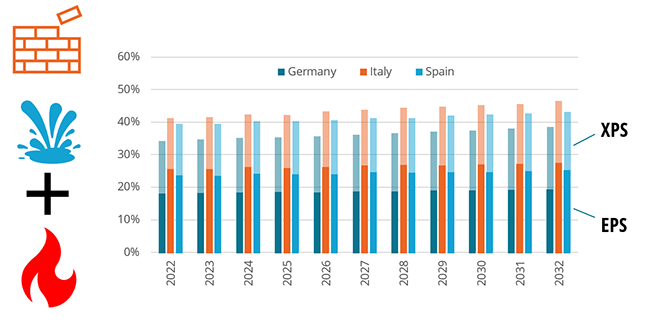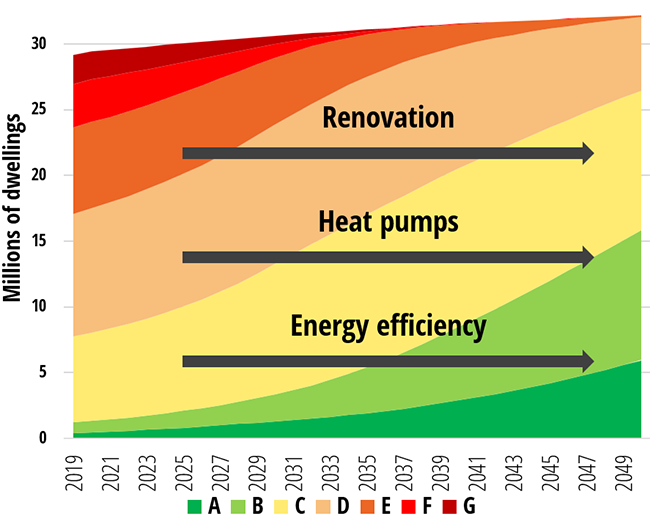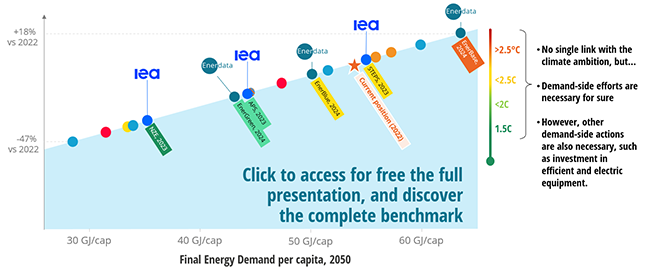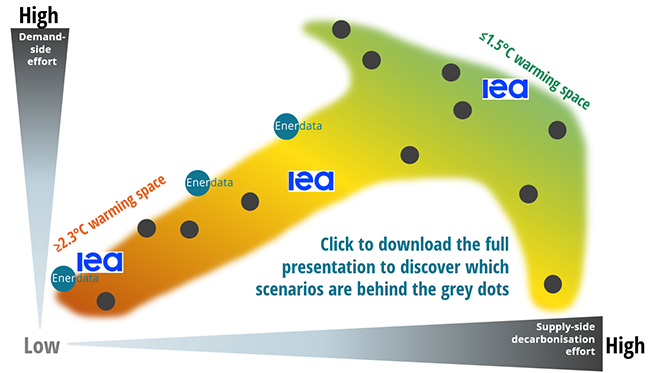Request the full presentation (FREE)
The multiplication of climate risks, from droughts to floods and fires, poses increasing threats to many sectors. In this report, our experts focused on the buildings sector from an energy-climate perspective, highlighting many interesting dimensions and perspectives. By 2050, buildings are envisioned to be significantly more sustainable. The undergoing transformative changes underway can be observed from the grassroots level to global climate goals. However, exploring the future presents a challenge, as multiple pathways exist to reach the desired outcome.
The first part of the report focused on the range of physical risks that buildings face. Enerdata evaluates these risks using projections and scenarios, while also considering corresponding solutions to mitigate them. The growing market for flood-resistant polystyrene insulation reflects a growing focus on climate adaptability, similarly, the use of wooden structures in new dwellings highlights a shift toward renewable materials.
Market for flood-resistant polystyrene-based insulant materials

Source: Enerdata
Additionally, sectors such as flood barriers and water-resistant doors and windows are expected to see significant growth, with market sizes predicted to double or even quadruple. These trends point towards the building sector prioritising both environmental adaptability and sustainable innovation.
In the next section, the focus shifts to the crucial building variables that describe its energy transition. It highlights the importance of medium- and long-term scenarios or sensitivity analyses to address multiple questions and make informed decisions. Enerdata offers a comprehensive examination of energy-related questions and future projections of energy-related indicators for buildings, ranging from energy performance to energy prices or even carbon management and carbon price. The combination of all dimensions provides a valuable foundation for analysing the energy budget of building owners and is therefore highly relevant for building financers.
Breakdown of the EPC label - France

Source: Enerdata, EnerBlue Scenario
Our experts then link building-related indicators to a more fundamental energy-climate perspective. Indeed, the future of buildings is increasingly shaped by sustainability, but at what pace? The pace of decarbonising the building sector varies significantly across countries, influenced by indicators such as national priorities and policies, technological advancements and investments in energy transitions. At Enerdata, through our EnerFuture scenarios, we model three core potential pathways:
- EnerBase (aligned with a >+3°C global temperature rise),
- EnerBlue (consistent with a ±2.5°C increase), and
- EnerGreen (aiming for a well-below +2°C limit).
These scenarios reflect the complex interaction of various factors, including the growing trend of electrification, which ultimately depends on how countries collectively respond to the challenges of decarbonisation. We have benchmarked multiple scenarios along multi-dimensional scales, providing an overview of the modelling approaches used by each institution generating global energy-climate scenarios.
This analysis includes some comparisons and insights from EnerFuture and the World Energy Outlook of the International energy Agency (IEA).
Energy Climate Scenario Benchmark on Energy demand per person – 2050 - World
Source: Enerdata, Scenario Benchmark
Multi-dimensional Energy Climate Scenario benchmark – 2050 - World
Source: Enerdata, Scenario Benchmark
In conclusion, there is a clear connection between actions taken on a smaller scale and their broader, large-scale impacts. In this report, our experts not only explored this relationship but also quantified its significance, offering valuable insights into how localised efforts are linked with substantial global change.
 Energy and Climate Databases
Energy and Climate Databases Market Analysis
Market Analysis
